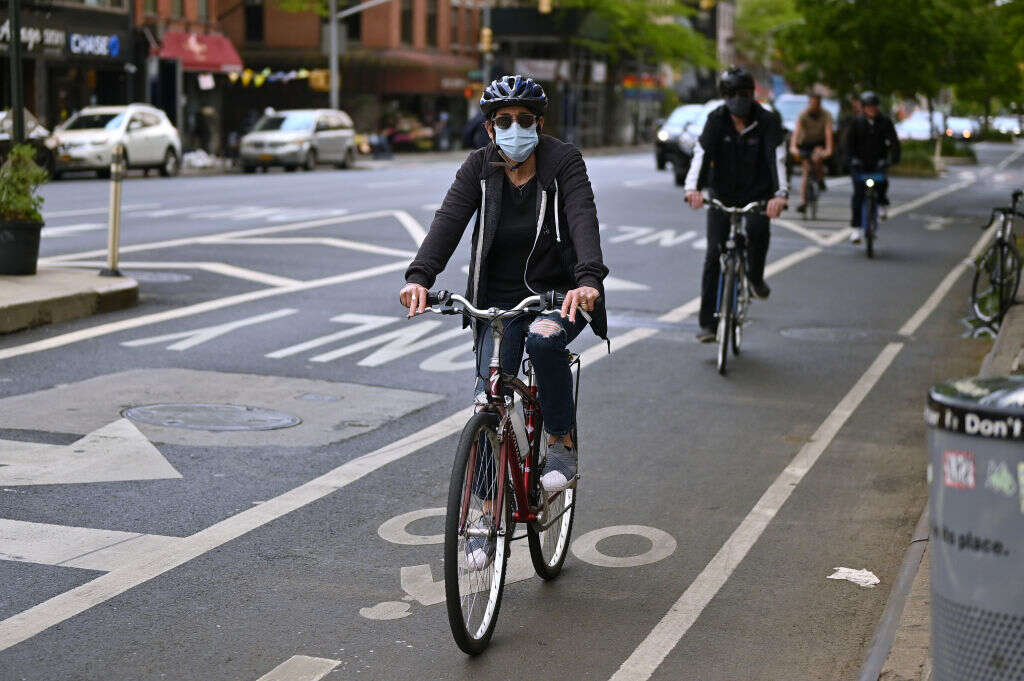
In cities with an active or growing cycling community, this time of year is usually focused on encouraging more people to consider riding their bikes to work.
But Bike to Work Day, like everything else this year, has been postponed or canceled in most cities. For local cycling advocacy groups, which typically host the event in late May or early June, that means they’ve lost a powerful tool for getting their neighbours involved in efforts to transform city streets – right when cities themselves are taking dramatic steps to promote cycling in response to the pandemic.
“It’s a huge bummer to not be able to do it as a big collective event,” says Colin Browne, spokesperson for the Washington Area Bicyclist Association in Washington, DC. “The energy from the event is really invigorating for us… It’s a lot of people’s first touch with the organisation, so it’s a big thing for us in terms of engaging with new people”.
The idea behind the decades-old event is similar whether it’s in DC, Seattle, Toronto, or London: People commute to work anyway, and on one day in particular, they’ll be encouraged to do it by bike. If they like it, maybe they’ll keep doing it. And if they keep doing it, maybe they’ll join the ranks of citizens seeking safer streets for pedestrians and cyclists in their cities.
This year, of course, it’s different. The basic concept of going to work at all has suddenly shifted, with millions out of a job and millions more working from home. For those who are still commuting to a workplace, every part of the process can present a safety hazard.

City workers in Saint-Malo, France, use stencils to mark a new bicycle line. (Damien Meyer/AFP via Getty Images)
The League of American Bicyclists, which organized the first National Bike Month and Bike to Work Day in 1956 and provides support for local events across the US, has set a new national date for the event, on 22 September. Many local groups have followed suit, though whether the date holds remains to be seen.
Still, some groups are trying to make the most of the enthusiasm for springtime cycling paired with an uptick in cycling generally during the pandemic.
The Washington Area Bicyclist Association is usually one of many groups supporting Bike to Work Day in the DC area, but this year it saw an opportunity to try something else. The organisation put together its own event in May, dubbed Bike Anywhere Week, sending T-shirts and bingo cards to participants with challenges such as “bike one of the trails near you,” “ride at sunset,” “clean your chain,” and “put air in your tires.”
There aren’t as many participants as in a normal year, Browne says: About 3,000 had signed up by mid-May, compared to 16,000 or more in a normal year for Bike to Work Day. That drop will be reflected in smaller fundraising totals and slower growth in new membership signups, but the change allowed the organization to try something new.
“We’ve been interested in exploring [the question]: What if it’s not just work?” he says. “People bike for a lot of reasons and to a lot of places. … We want to celebrate all of that.”
The Cascade Bicycle Club in Washington State made a similar change a few years ago, switching to “Bike Everywhere Day”. The 19 June event is continuing as scheduled, under the guise that everyone can still go for a ride, even if it’s not to work or part of a social event. But almost everything else on the organisation’s events calendar has been cancelled this year.
It was an especially difficult decision because 2020 marks the club’s 50th anniversary. Instead of celebrating with its annual 206-mile Seattle-to-Portland ride – the group’s biggest fundraising event, attracting about 8,000 riders each year – the club had to furlough 28 members of its staff.
Those kinds of rides “are a huge part of our budget,” says Sarah Kiesler, Cascade Bicycle Club’s senior marketing manager. “We’re doing our best to move forward with who’s still here and make things happen.”
If the Seattle-based group has anything working in its favour, it’s that the city decided to permanently close 20 miles of streets to most automobile traffic, giving cyclists more room to safely ride. It’s a similar story in cities around the world: Montreal announced 40 kilometres of bike-friendly street adaptations right after it decided to add nearly 330 kilometres of new bike paths. London, meanwhile, is creating low-traffic corridors and building new cycle routes as the UK overall seizes this unusual moment to bolster cycling infrastructure nationwide.
Kiesler says all available signs show more people are cycling. Digital trackers in Seattle show an uptick in bike traffic, and in a survey of Cascade members, more than 70 percent said they were biking the same or more than usual. Browne says the DC area has seen the same rise in activity, with local bike shops selling out of entry-level bikes shortly after lockdown orders began.
While the usual kinds of events are on hold, the League of American Bicyclists is encouraging cyclists to help the new arrivals, offering tips on how to be a “bike ambassador” during this new surge of interest. That includes modeling good behaviours – the old ones like using lights and wearing helmets, and the new ones like wearing masks when cycling around other people.
“We want to do whatever we can to help you be an ambassador for better biking,” the League’s executive director, Bill Nesper, wrote last week. “This doesn’t mean offering unsolicited advice like, ‘your seat is too low.’ Just meet them where they are and be a good bike friend.”
Adam Sneed is the managing editor of CityMetric.






